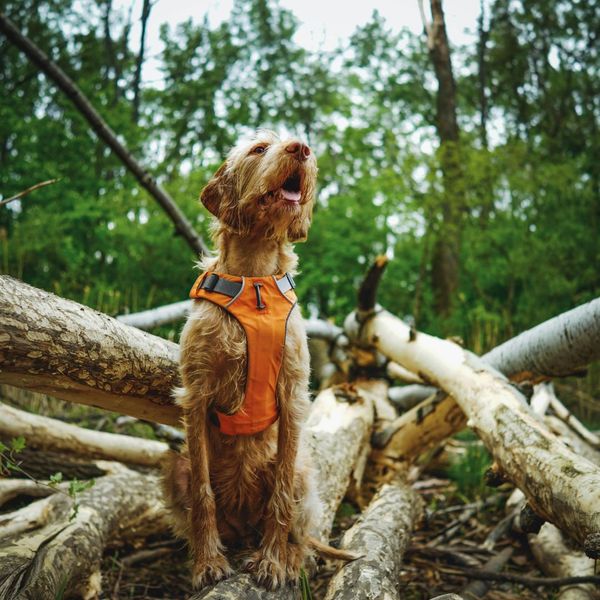Hiking with your dog is one of the great joys of living in the Okatie area, but the beauty of our local trails comes with a hidden danger: ticks. These tiny pests can transmit serious diseases to both you and your canine companion, making prevention a top priority. At the Veterinary Medical Center of Hardeeville, we believe that an ounce of prevention is worth a pound of cure, and being prepared is the best way to ensure your hiking adventures are both fun and safe for everyone.
How To Avoid Ticks While Hiking With Your Dog
How To Avoid Ticks While Hiking With Your Dog

The Dangers of a Tick Bite
Ticks aren't just creepy; they're a serious health threat. When a tick attaches to your pet, it can transmit dangerous diseases. Lyme disease is considered less common in the Lowcountry than in the Northeastern United States, but ticks can still transmit diseases like Rocky Mountain spotted fever, ehrlichiosis, and anaplasmosis. Symptoms of these illnesses can range from lethargy and lameness to fever and loss of appetite. Some conditions can become chronic if left untreated, making preventative care for dogs absolutely essential. Protecting your pet from ticks is a vital part of responsible pet ownership and an overall dog wellness plan.

Talk to Your Vet About Prevention
Before you hit the trails, the most important step you can take is to talk to a professional. The experts at our veterinary clinic in Hardeeville can help you determine the best tick prevention strategy for your dog. They will consider your pet's age, breed, lifestyle, and any pre-existing health conditions to recommend the most effective and safest products. Don't rely on advice from a friend or an online forum—get a personalized recommendation from a trusted vet.

Use an Effective Preventive Product
There is no one-size-fits-all solution for tick prevention. Your veterinarian can recommend a variety of effective products, including oral chewables, topical spot-on treatments, or special collars. All of these products are designed to either repel ticks or kill them shortly after they attach. Consistency is key, so make sure to administer the preventative product year-round, as ticks can be active even in mild winter weather. Following the schedule is a critical part of your overall preventative care for dogs.

Stay on the Trail and Avoid Tall Grasses
Ticks love to hide in tall grass, thick brush, and wooded areas where they can easily latch onto a passing host. To minimize your dog's exposure, keep them on the designated hiking trail. This not only helps protect the local ecosystem but also significantly reduces the chances of your dog picking up a tick. When you're out exploring, be mindful of where your dog is sniffing and wandering.

Consider Using Dog-Safe Tick Repellent Sprays
In addition to your veterinary-prescribed preventative, you can consider an extra layer of protection on the day of your hike. There are special dog-safe tick repellent sprays available that can be applied to areas where ticks are frequently found, such as your dog's legs, paws, and belly. These products can offer an added barrier against ticks. However, it is crucial to check with your veterinarian before using any of these sprays to ensure they are safe for your specific dog and will not cause a reaction or interfere with their primary preventative medication.

Keep Your Dog's Coat Groomed
Keeping your dog's coat well-groomed is a simple but effective way to prevent tick issues. Ticks can easily hide in long, matted, or thick hair, making them difficult to spot. A shorter, well-brushed coat allows you to more easily see and feel for any attached pests during your post-hike check. If you have a long-haired breed, consider a trim during prime tick season to make those crucial body checks more efficient.

Perform Thorough Post-Hike Checks
Once you’re home, or before you load up in the car, it's time for a thorough inspection. This is the most critical step to ensure no ticks have latched on. Use your fingers to feel for any small bumps or irregularities on your dog's skin. Pay close attention to warm, dark, and hard-to-reach areas like between their toes, under their armpits, behind their ears, and around their tail and groin. Ticks can be as small as a pinhead, so be diligent. It's also a good idea to perform a quick visual check before you even start the hike and during a water break to catch any immediate hitchhikers.

Clean and Inspect Your Gear
Ticks aren't just a problem for your dog; they can also hitch a ride on your hiking gear. After your hike, be sure to shake out and inspect leashes, harnesses, towels, and blankets. If you use a car seat cover for your dog, wash it regularly. Ticks can survive in a warm, dry environment for some time and could potentially re-attach to your dog or even you later. A quick cleaning of your gear can make a big difference in preventing ticks from coming into your home.
Hiking with your dog is a rewarding experience, but it requires preparation. By using vet-recommended tick prevention, staying on trails, and performing thorough post-hike checks, you can protect your pet from dangerous diseases. Don't wait until you find a tick; be proactive about your dog's health. For personalized advice on the best preventative care for dogs, contact the Veterinary Medical Center of Hardeeville today to schedule an appointment.
